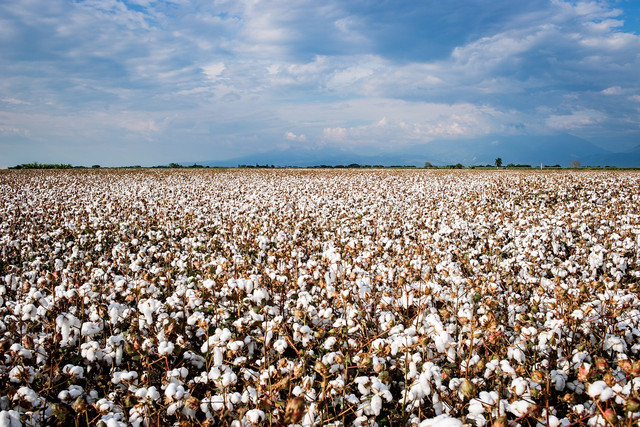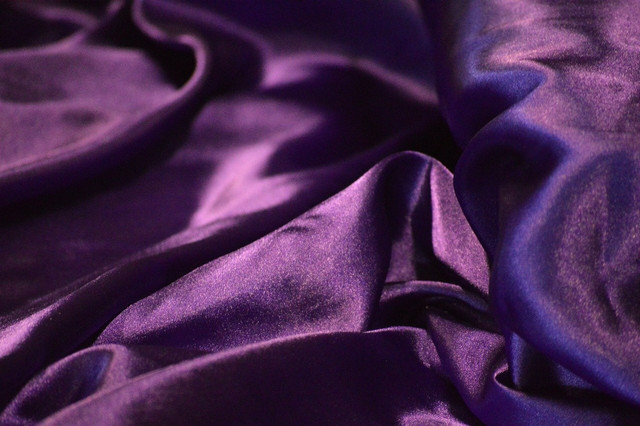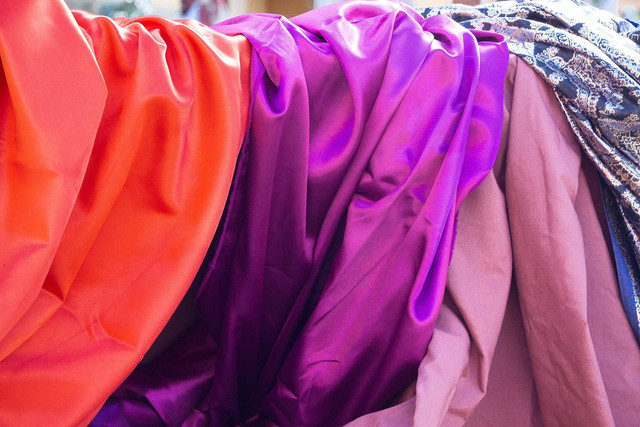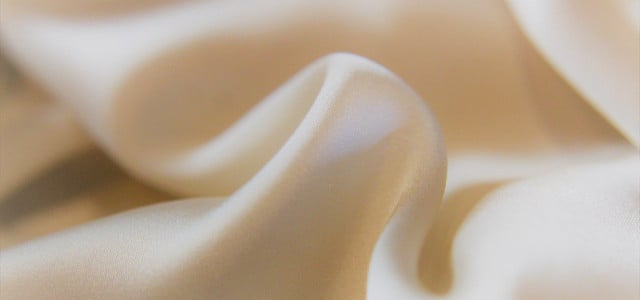Cupro fabric (also called “vegan silk”) is made from recycled cotton and cotton industry byproducts. It helps cut down on waste, but the production involves some nasty chemicals which have a negative impact on the environment.
Short for cuprammonium rayon, cupro fabric is light and stretchy – and made almost exclusively in China. On its own, cupro is a somewhat sheer material, so it is often combined with other materials. Coveted for its fine texture, cupro fabric is often used for fine garments.
Where Cupro Fabric Comes From

Chinese scientists developed cupro as an inexpensive way to recycle and reuse waste. Cupro is made from recycled plant fibers (usually cotton). These fibers can come from old, thrown-out cotton clothing or from the byproducts of cotton production.
- The invention of cupro provided a way to use the linters – the parts of the cotton plant which cannot be used in cotton production. This helps reduce waste from the cotton industry.
- Cupro can also be made from cotton clothing. Used clothing which can’t be sold in second-hand shops often ends up in landfills. Cupro makes it possible for these clothing items to be recycled and given a new life.
How Cupro Fabric is Made



Cupro is produced by treating cotton fibers with copper and ammonia. These chemicals combine with and alter the plant cellulose. The resulting substance is then treated with caustic soda and spun into string. Lastly, the extruded strings are dipped into hardening baths which once again alter the chemical structure of the material and remove the ammonia, copper, and caustic soda. Finally, this results in the lightweight, super soft, semi-synthetic fabric called cuprammonium rayon. Cupro can then be dyed and combined with other fabrics before it is used for apparel.
Clothing Made of Cupro Fabric



Cupro is often marketed as a fine and luxurious vegan silk alternative. In fact, some argue that it is even better than silk because curpro has the same appearance, texture, and flow of silk, but it is also more breathable and it’s machine washable. Whereas genuine silk must be taken to the dry cleaners, cupro can be easily washed at home and air-dried.
Cupro fabric is used for a wide variety of apparel. It’s great for sportswear and outerwear because it is so lightweight and breathable. It’s also used in fine garments like lingerie, dresses, scarves, and blouses. Many high-end companies even use cupro for suits and neckties.
Is Cupro Fabric Sustainable?



Cupro fabric is largely marketed as a natural, recycled material. Because it is made from recycled cotton and the linter byproduct of the cotton industry, cupro cuts down on waste. The production of cupro is also not very water-intensive, especially compared to cotton. Though cupro production involves chemicals, the final product is free of them, making it biodegradable. It also does not involve any animal agriculture, so it can be marketed as a vegan product.
While cupro does have several environmental benefits, it also comes with a lot of negatives.
The copper, ammonia and caustic soda involved in cupro fabric production all pose a high risk to the environment. Cupro production emits pollutants and often results in leaks as well. The chemicals used can pollute the atmosphere, soil, and water, damaging our ecosystems. Cupro production emissions can include sulfur, nitrous oxides, carbon disulfide, and hydrogen sulfide. Water-polluting emissions include nitrates, phosphates, iron, and zinc. The chemicals used in cupro fabric production cannot be used forever either. The copper, ammonia, and caustic soda must be appropriately disposed of along with the hardening baths. Overall, producing cupro fabric in an environmentally sustainable way is difficult. The US actually banned production altogether because manufacturers had such a hard time complying with basic environmental regulations. Unfortunately, there are no certifications for cupro fabric, so the chemical processing and disposal goes unchecked in China. Furthermore, while cupro is technically biodegradable, it does not decompose in landfills. It also cannot be thrown into the compost due to the bleach and dyes. Cupro must be properly composted by recycling centers, meaning it often ends up in the trash anyway. The biodegradable factor of cupro is therefore highly debatable.
The chemical process of producing cupro fabric exposes factory workers to potential harm as well. The workers are continuously exposed to toxic chemical emissions which can lead to severe illness and chemical poisoning.
Read more:
- What is Modal Fabric and Is It Really Sustainable?
- What is Viscose Fabric and Is It Eco-Friendly?
- 10 Sustainable Jeans Brands You Need to Know
Do you like this post?







